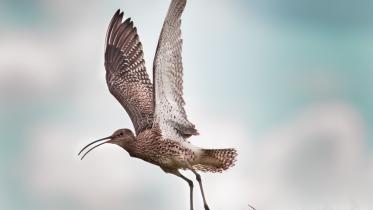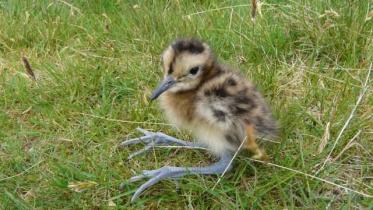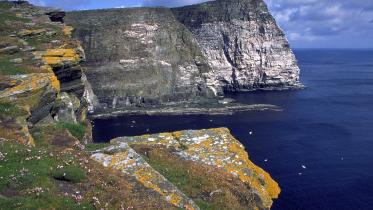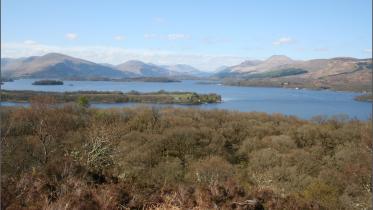Peatland ACTION - New approach to processing applications – March 2024
NatureScot Peatland ACTION - New approach to processing applications (FY 2024-2025)
Due to the anticipated high level of demand for Peatland ACTION funding and to ensure optimum return for 2024 / 2025 budget our current approach of assessing applications on a first come first served basis is no longer appropriate. To help manage this demand and maximise the amount of peatland restoration we have introduced a competitive funding process for this year.
- Deadline for applications is 31 May 2024.
- Initial decisions on these applications will be made by the end of June 2024.
To lessen the time required to draft and submit an application, we will accept cost information based on estimates. Only those applications subsequently selected for approval will require a formal tender exercise to be completed. Final decisions on approvals will be based on this exercise.
All other application requirements will remain as currently set out in our guidance.
This approach will allow all those who can meet the application deadline an equal opportunity to access the funding that will be available. Our focus is on supporting those projects which allow us to maximise the area of peatland restored and minimise any risks to delivery.
To help us select projects we are sharing our internal assessment guidelines. These are set out below. We have been using these assessment guidelines internally to assess the quality and value of applications over the last few years. The only change is that we will now use these guidelines to compare projects against each other in a competitive way. This will allow us to select applications that deliver high quality restoration and help us maximise the outcomes from peatland restoration in Scotland while being affordable within the available budget.
Once applications are received, they will be subject to an initial assessment. This will identify a suite of projects which we will then request fully tendered costs, if these haven’t already been submitted.
What happens if my project is not awarded funding?
Projects that meet the assessment guidelines but are not successful in this round of funding will be put on a reserve list. We recognise the amount of preparation work required to bring projects to the application stage. We will do everything we can to identify funding so that projects in reserve can progress in future. Depending on availability of funding, it may be possible to approve a second tranche of projects at a later date. We will keep you informed of this as soon as possible.
To note: Any applications submitted early will be gratefully received as this will allow us to move through the assessment phase more quickly. Please ensure applications are completed with all the questions fully and clearly answered. With such a significant demand your application will be assessed on the information provided as we will be unable to make requests for missing information. We continue to welcome multiyear applications seeking a commitment beyond the current financial year.
NatureScot Peatland ACTION – Criteria for assessing applications for 2024/25
Includes consideration of value for money, the opportunity for attracting other sources of finance, and the level of risk attached to project delivery within specified timescales.
Assessment of value for money and scale
2 = 1,501-2,500
1 = 2,501-5,000
0 = 5,000+
2 = Good
1 = Reasonable
0 = Poor
2 =>10%
1 = >5%
0 = 0%
2 = >250 ha
1 = >100 ha
Assessments of risks
2 = Low risk
1 = Medium risk
0 = High risk
Protected Species/PSRA/Scheduled Monuments/Powerlines/Drinking Water Catchments/Permissions (Designated sites/PDR)/Peatland Code
2 = Majority low
1 = Majority medium
0 = Unmitigated / High
2 = Low risk
1 = Medium risk
0 = High risk
2 = Mostly
1 = Partly
0 = No
3 = Wholly
2 = Mostly
1 = Partly
0 = No
3 = Wholly
2 = Mostly
1 = Partly
0 = No
Peatland ACTION Partnership
Scotland is on track to restore 10,000ha of peatland in 2023/24. This is a fantastic achievement and represents a year-on-year increase of around 20% over the last couple of years. This illustrates the growing confidence, maturity and momentum behind peatland restoration as a new industry based on a strong partnership between landowners, contractors, agents, Scottish Government, NatureScot and other Delivery Partners.
At the same time as increasing the hectare output this year, we have been laying strong foundations for increasing the pipeline of projects for future demand. We now have many more landowners coming forward with proposals for peatland restoration.
Indeed, our ability to commit to projects in advance and use the new protocol to allow operations in the bird breeding season has led to 90% of the 2024/25 Partnership budget being assigned to projects already. This is providing certainty for contractors – to allow them to better plan their work throughout the year – and this demand has resulted in a pipeline of designed projects that we can use to attract wider funding and investment.
While we still have a lot more to do in order to meet the ambitious target to restore 250,000ha by 2030, peatland restoration is a success story – it is successfully addressing the three key constraints – to increase demand, streamline and improve design, and increase capacity and skills to deliver.





